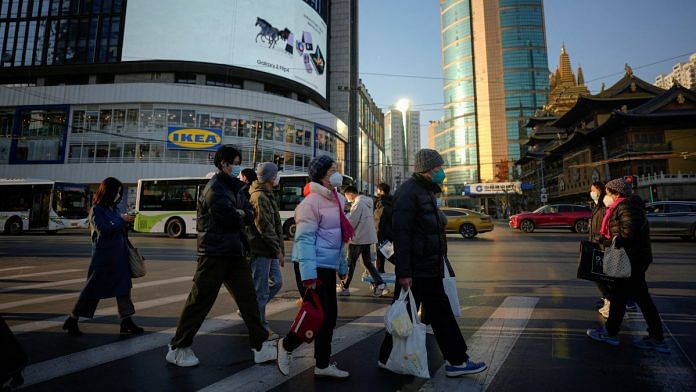New Delhi: India’s consumer durables sector is in ‘wait and watch’ mode thanks to rising Covid-19 cases in China. The industry is anticipating a disruption in supply — which may lead to TVs, ACs, and fridges growing more expensive for consumers — if the pandemic situation worsens to coincide with the Chinese new year holidays towards the end of January.
According to Eric Braganza, president of the Consumer Electronics and Appliances Manufacturers Association (CEAMA), “The rise in Covid cases could be a major disruptor. It is something that is so unpredictable… The immediate issue is going to be the Covid situation in China. If it gets more intense, then we could see disruptions in supply chains because from 21 January onwards, China literally goes into lockdown mode because of their new year and reopens effectively around the first week of February.”
Braganza, who is also president of Haier Appliances India, added that if there are disruptions in the supply chain in January, the industry would start feeling the pinch towards the end of February and into March, just ahead of the summer, which is ordinarily a strong sales season for the sector.
Expressing similar views, Avneet Singh Marwah, director and CEO of Super Plastronics — which has the branding licence for international brands such as Blaupunkt, Thomson, Kodak and White-Westinghouse — said, “Given the current Covid situation in China, after January we are anticipating supply restrictions, and any delays in shipments could result in a shortage of products. Consequently, a majority of the brands are stocking up raw materials. The impact will be felt starting in February.”
The company, he added, has been focussing on stocking up components. “Normally after the festivals, there is a lull period, but we were focussed and capitalised on the situation. We continued purchasing and increased our minimum stock level. Most companies are adopting this practice to increase their minimum stock level by two times due to unpredictable situations.”
Kamal Nandi, business head and executive vice president, Godrej Appliances, said his firm hadn’t yet seen disruptions in shipments from China — most of the raw materials and components required for the March quarter have either arrived or are in transit.
“We will need to see how the situation pans out after the Chinese festival season, which ends in early February. If there is not much improvement in the Covid situation, then the industry may see an impact on AC production in the June quarter,” Nandi said.
Braganza further said that while raw material costs have stabilised currently, “if supply chains start getting affected, then you could start seeing price hikes”. He added that the industry doesn’t anticipate any new disruptions as a consequence of the Russia-Ukraine conflict — the Covid situation in China is the immediate concern.
Also read: What dominates Chinese chatter on India—economy, cheaper medicine
Industry expecting growth if things go back to normal
According to Braganza, while it’s difficult to predict how 2023 will pan out given this Covid-induced uncertainty, the consumer durables industry could see good growth if things are back to normal by the end of February. This would be powered by the demand for cooling products — air conditioners, refrigerators, coolers and fans — given the forecast of a severe summer season.
There was a similar trend of cooling products driving consumer durable sales in 2022. While air conditioner sales saw around 40 per cent growth, other products such as washing machines, refrigerators, and televisions grew in the range of 8-12 per cent, according to CEAMA.
The consumer durables industry is pegged at about Rs 90,000 crore — a figure that’s expected to grow to Rs 1,50,000 crore by 2025, said Braganza.
Nandi said the summer of 2022 had seen higher demand for cooling appliances after a two-year lull, and this was followed by a festive season that saw consumers upgrade their appliances and make purchases that they’d postponed for a long time.
“Although inflation affected consumer sentiment in the mass segments, premium segments remained buoyant. We have witnessed growth in premium segments over mass segments across geographies and channels. For Godrej Appliances, the premium segment has grown over 100 per cent in comparison to the pre-pandemic period FY 19-20; this growth rate is at par with the industry trend,” he said.
He added that overall, the industry is expected to grow at 10-15 per cent in FY 23-24 and Godrej Appliances is expecting 20 per cent growth in this period, primarily led by the premium segment.
(Edited by V S Chandrasekar)
Also read: Growing frustration in youth has the Chinese govt worried. It sees solution in hukou






